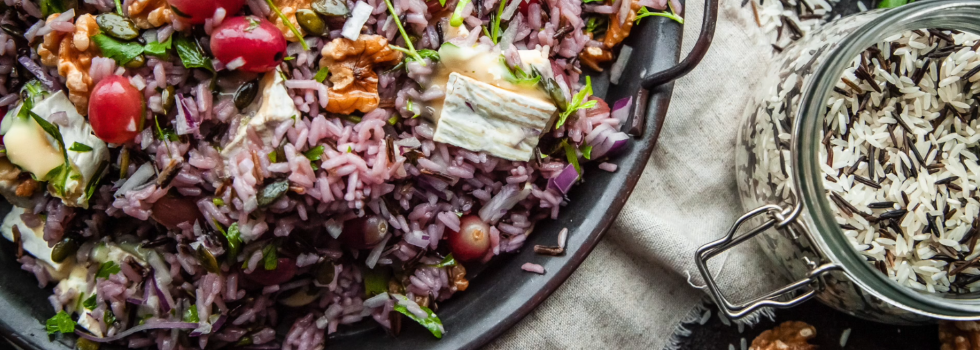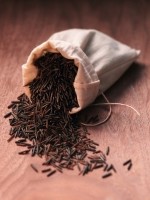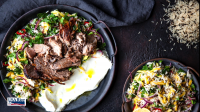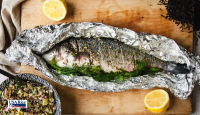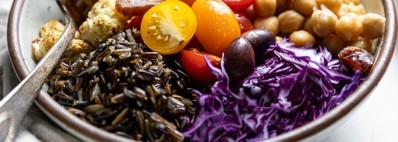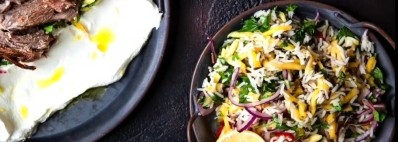Promotional Features
Why wild rice is an upcoming superfood
The increasing focus on plant-based eating, clean label and ingredients provenance, as well as the hunt for foods with nutritional benefits, is creating demand for a raft of healthier options in the food and drink market.
Consumers are actively on the lookout for foods that can provide nutritional and functional benefits to optimise their health and wellbeing, particularly in the wake of the recent global Covid-19 pandemic.
Among the multitude of options available to manufacturers and consumers, suppliers of wild rice have a strong card to play, as the ingredient is considered to tick all of the boxes above – and a few more besides. It is a wholegrain and can be used in a variety of products and ready-made meals to create added value for the consumer.
Referring to wild rice as a grain is a trifle misleading, as it is actually a seed from a marsh grass, with research revealing that it was historically gathered and eaten in North America1 and the plants have been cultivated the same way for centuries. Previously, it was only thought to grow in flowing waters, but since the 1950s, dykes forming paddy fields have been established to grow wild rice in still water. This development intensified and increased production, with the two major growing areas in the USA being Minnesota and California.
Production systems are considered sustainable, as there is no known significant damage to air, water, land, soil or forests.
Ongoing research projects are aimed at developing new, stronger strains of wild rice, resistant to certain fungi, and farming yield models are continually being modified to meet growing demand.
Nutritional benefits
The nutritional benefits associated with wild rice are numerous, indicating why its popularity is increasing as consumers seek out healthier foods with sustainable provenance.
Generally not polished or refined, wild rice is eaten in its optimum nutritional state. It is a wholegrain, suitable for gluten-free diets, low in calories, as well as being high in dietary fibre and essential nutrients, such as phosphorus (which can help strengthen bones) and magnesium (which can help boost energy levels).
Cooked wild rice has about 30% fewer calories than brown rice, but packs about 40% more protein, a huge plus for an increasing number of vegetarian and flexitarian consumers, who are seeking to ensure sufficient protein intake in their daily diets. It is also a source of potassium and zinc, and is rich in antioxidants2. Wild rice can contain as much as 30 times the antioxidants of white rice, helping to protect the body from disease, as well as age healthfully. It also contains vitamins A, C and E, which are believed to help the functioning of the body’s immune system – particularly relevant given the recent pandemic.
UK growth
The UK is the largest importer of US rice into Europe and also one of the global leaders when it comes to innovation and developing new consumer trends, reveals Piers Stevens, head of ingredients S&B Herba, one of the leading suppliers of wild rice to the market. While the biggest US rice categories in the UK are long grain and easy cook long grain, which predominantly end up in the ethnic and wholesale trade, wild rice is increasingly staking its claim in the market. Stevens estimates that the global wild rice market is around 10,000mt with the UK accounting for around 500mt of that demand.
While the Covid-19 pandemic did have an impact on UK sales of wild rice, with retailers reducing their ranges to make it easier to manage supply chains, sales have recovered in 2021 and Stevens is hopeful that they will be on a par with 2019 or perhaps ahead in 2022, as they were “growing nicely” prior to Covid, he says.
Uses for wild rice
Traditionally in the UK, wild rice has been blended with other rices, such as easy-cook long grain rice, brown long grain rice and red rice, as well as being used in canned soups and a variety of ready-made products. Now, the blends with which it is associated are broadening to include ancient grains like quinoa and spelt, as well as pulses such as lentils and peas. “Wild rice gives an interesting and different flavour and texture profile to other grains for those looking for something new to add to their plant-based diets,” explains Stevens.
For S&B Herba, the aim is to grow awareness and sales of the category in the UK, educating manufacturers and consumers alike, by using recipe ideas to spark inspiration and make wild rice more of a cupboard staple than it is today. A sister brand to the more retail-based Tilda rice, S&B Herba’s wild rice business is focused more as an ingredients solution for manufacturers, explains Stevens.
Given all its dietary advantages, Stevens describes wild rice as one of the world’s most powerful superfoods. “Wild rice is placed to be one of the next consumer trends, due to its good health characteristics and its versatility – used in a number of different ways and cooked with different grains, pulses and cereals,” says Stevens. “It’s the caviar of all grains – all natural, non-GMO. It’s a food we should all include in our regular diets.”
To discover more about wild rice and its use in manufacturing, contact S&B Herba here or USA Wild Rice here.
To see a recipe suggestion using wild rice, click on video below:
Source
1. https://en.wikipedia.org/wiki/Wild_rice
2. https://www.taste.com.au/healthy/articles/healthy-showdown-wild-rice-vs-brown-rice/dhlueu2m
